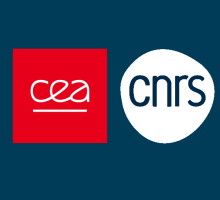Plasmonics on the quantum level: an introduction to our work
A new method has been developed to compute the electronic response in solids and evaluate the plasmon frequencies at various wavelengths. This method opens the way towards the calculations of surface plasmons on the quantum level without any fitting parameter. It is the product of a collaborative work between the Laboratoire des Solides Irradiés (LSI), the International School for Advanced Studies at Trieste (SISSA) and the International Center of Theoretical Physics at Trieste (ICTP).
Surface plasmons
Collective oscillations at the surface of metals play a crucial role in physics, materials science, and biology.
In physics, plasmonics is photonics based on collective electronic excitations localized at the surface of the material, which should enable a significant reduction of optoelectronic devices down to the nanometer scale.
Most of theoretical descriptions of the optical response of plasmonics systems rely on the solution of Maxwell’s equations: each part of the nanostructure is computed and an abrupt interface between the nanostructure is assumed.
When the distance between nanometer-scale objects becomes itself of the order of a few nanometers, taking into account electronic tunneling is for instance needed, and a quantum description is mandatory.


